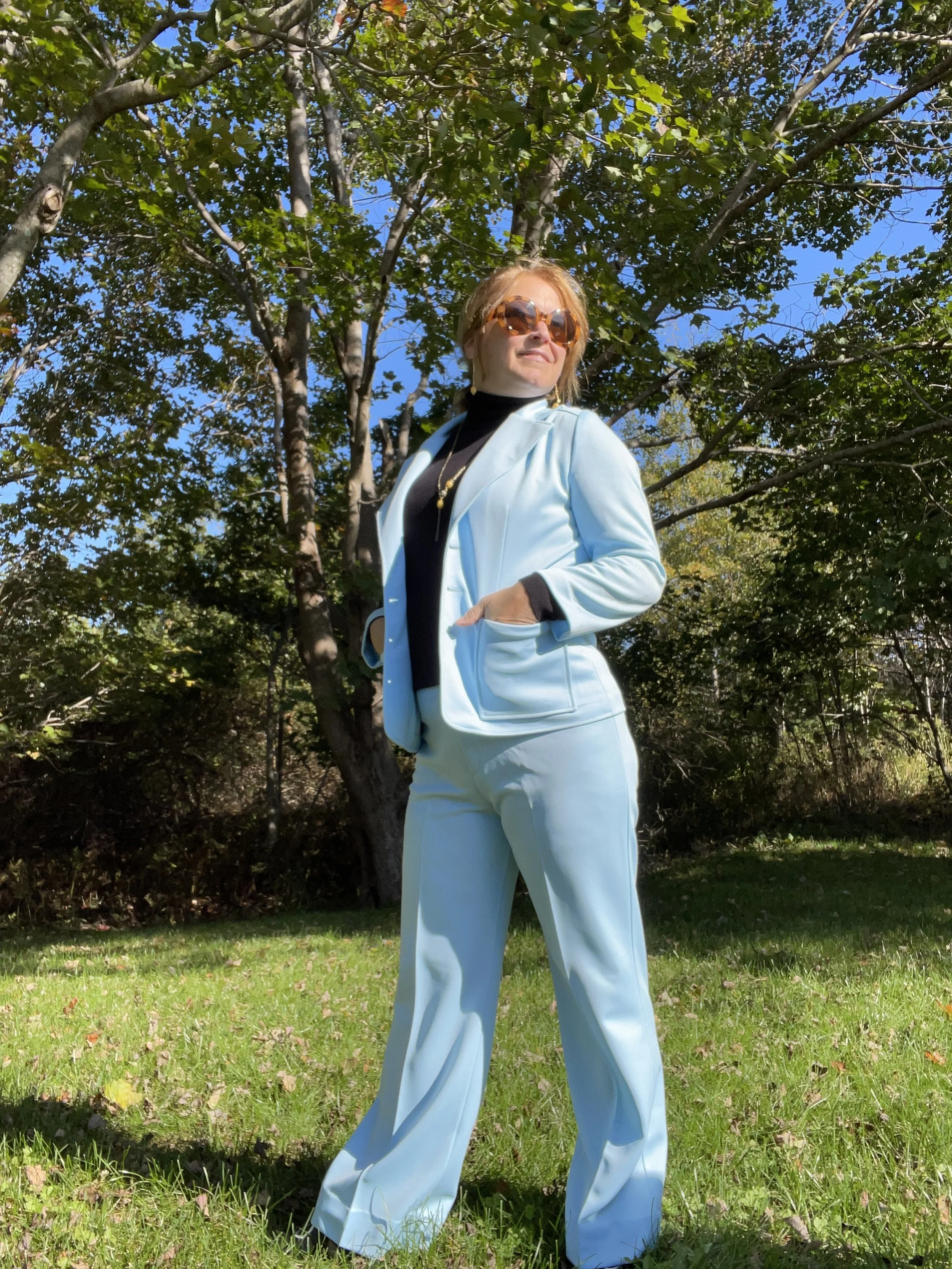1973: Fashion Revolution in Full Swing
The year 1973 marked a distinctive point in the evolution of 1970s fashion, with blue jeans becoming a dominant staple, reflecting the era's laid-back yet rebellious spirit. The combination of a turtleneck and blazer, popular for both men and women, exemplified the career woman look, reminiscent of Mary Tyler Moore. Translate that look to casual wear, and you have bell bottoms or wide-legged jeans or pants paired with a turtleneck, blazer, floppy hat, and big sunglasses—iconic!
Wide collars were starting to become even wider, ties were broader, and bell bottoms were also expanding. The debut of "The Six Million Dollar Man" in 1973 showcased the evolution of men’s fashion, with wide shirt collars and jacket collars worn without ties for a casual look. While Steve Austin was becoming better, stronger, and faster, 1970s style was becoming wider, more vibrant, and more relaxed. The plain suit remained a go-to for school and work, but when it came to casual wear, the styles were anything but plain. Men embraced loud prints, with plaid bell-bottoms becoming a staple. The 1960s fashion was quickly becoming a thing of the past, and the future was looking bright indeed. Browns, yellows, oranges, and avocado greens were seen not just in fashion but also in home decor, media print, and advertising. Goodbye, 60s, and hello, 70s!
Blue jeans reigned supreme across genders. The Brady kids from "The Brady Bunch," which aired from 1969 to 1974, with their flared jeans, pointed collars, and colorful outfits, provided a weekly dose of style inspiration in 1973. Blue jeans were the ultimate symbol of 1973's casual chic. Whether worn with a simple t-shirt, a fitted vest, or a statement blazer, jeans were versatile and widespread, becoming a staple of youth culture.
Although 1973 wasn't just about what the younger generation was wearing. The influence of shows like "Maude," which had premiered in 1972, continued to grow. Bea Arthur's portrayal of Maude Findlay brought forth the image of the modern, independent woman. Maude's wardrobe was a mix of practical and fashionable, often featuring pointed collars, vests, and the occasional dress, emphasizing that women could be stylish and assertive at the same time. Her style included the free-flowing dress and long vest often associated with the era. While dresses were still popular, the gypsy-style dress became a prominent trend. These dresses, characterized by their flowing fabric, intricate patterns, and bohemian charm, were perfect for expressing individuality. The mini skirt was still worn, but the hemline was coming down in favor of long skirts or knee-length skirts.
The music scene also had a considerable impact on fashion. 1973 saw the rise of glam rock, with artists like David Bowie and Marc Bolan of T. Rex pushing the boundaries of fashion. Their flamboyant styles, featuring pointed collars, glittery fabrics, and platform shoes, influenced mainstream fashion, encouraging both men and women to experiment with their looks. The casual glam seen in everyday attire was a toned-down reflection of the stage costumes of these rock icons.
In essence, 1973 was a year where fashion continued to reflect the changing times. The mix of traditional and wild styles, the influence of television and music, and the rise of denim as a wardrobe staple all contributed to a unique and vibrant fashion landscape. As we look back, it's clear that the styles of 1973 were not just about what people wore but also about how they expressed their individuality and navigated the cultural shifts of the era. After all, if you’re going to be better, stronger, and faster, you may as well do it in your own individual style.









